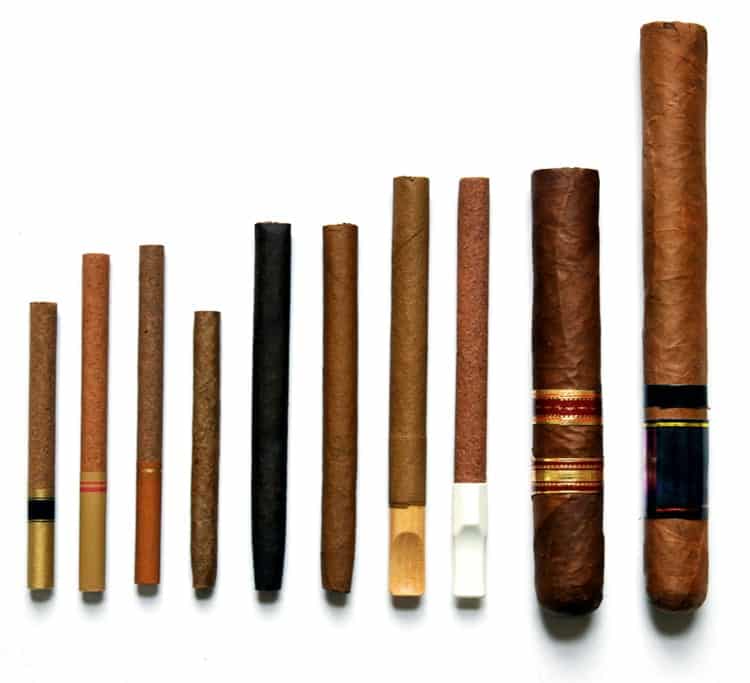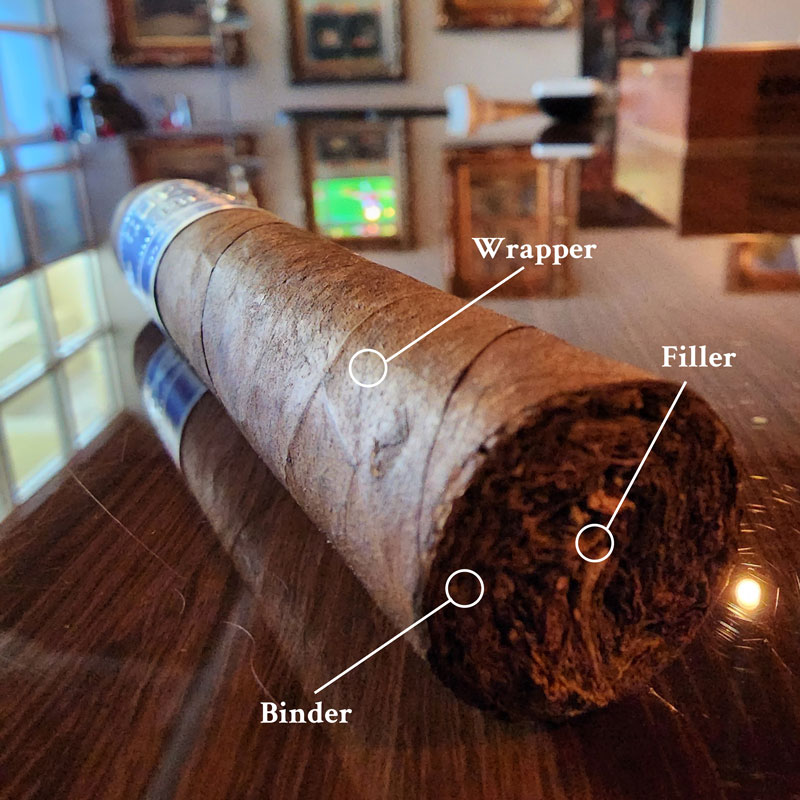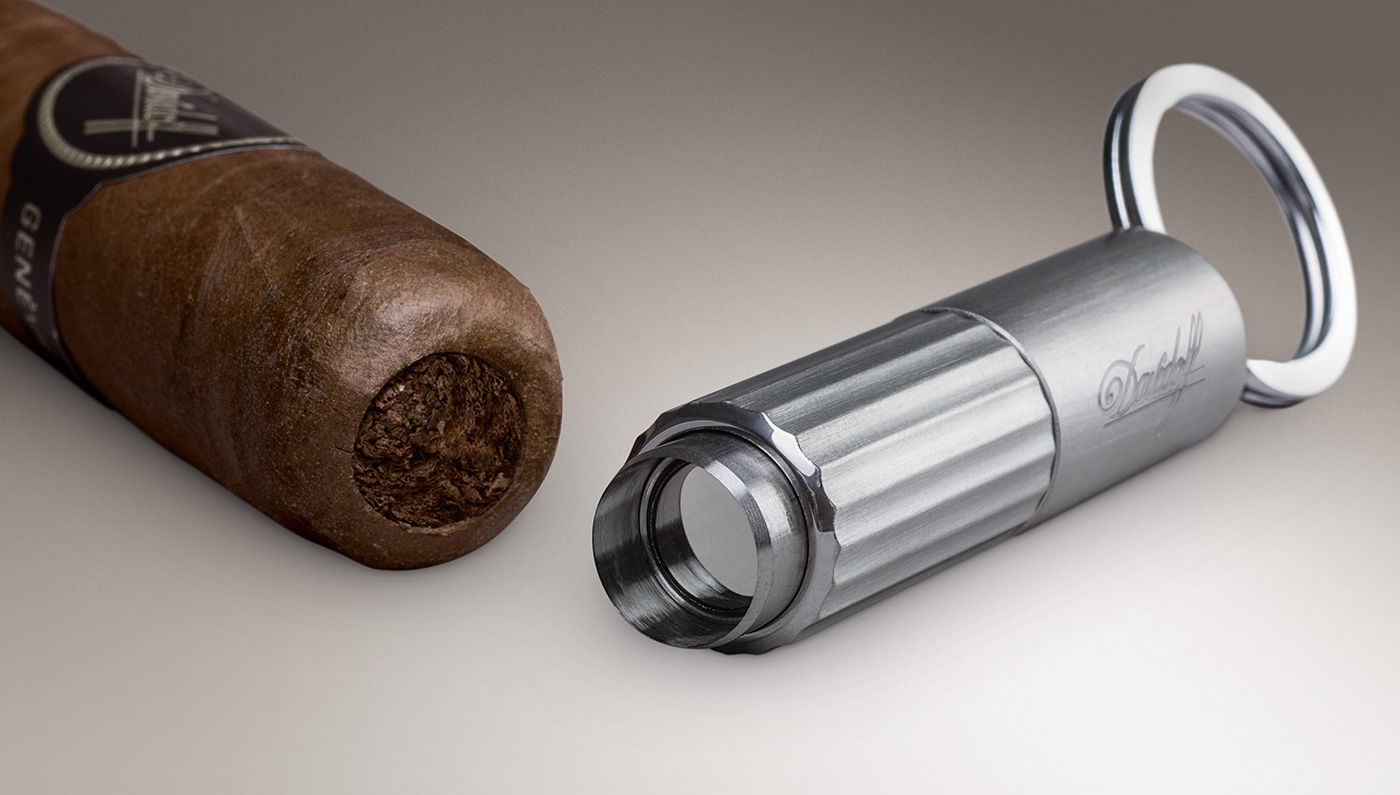Key Differences and Comparisons Between Cigars and Cigarettes
Cigars and cigarettes are two popular forms of smoking. While they may seem similar on the surface, there are several key differences between them in terms of their characteristics and smoking habits. Understanding these differences can help individuals make informed decisions about their smoking habits.
One of the main differences between cigars and cigarettes is their size and shape. Cigars are typically larger and thicker than cigarettes, with a length that can range from a few inches to over a foot. On the other hand, cigarettes are thinner and shorter, usually measuring around 3 to 4 inches in length. This difference in size and shape also affects the time it takes to smoke them, as cigars generally take longer to smoke than cigarettes.
Another important distinction is the way they are made. Cigars are typically made of tobacco leaves that are aged and fermented, resulting in a distinct flavor and aroma. They are usually wrapped in tobacco leaves, which adds to their robust and rich taste. On the other hand, cigarettes are made of processed tobacco that is finely ground and rolled into paper. The use of additives and chemicals in the production of cigarettes also contributes to their different taste and smell.
Smoking habits also differ between cigars and cigarettes. Cigars are often associated with a slower, more relaxed smoking experience. They are usually enjoyed on special occasions or as a way to savor the flavors and aromas. Cigarettes, on the other hand, are typically smoked more frequently and quickly, often as a habit or to satisfy a craving. Due to their smaller size, cigarettes are also more convenient to carry and smoke on-the-go.
In summary, cigars and cigarettes have distinctive characteristics and smoking habits. Cigars are larger, made of aged tobacco leaves, and enjoyed at a slower pace, while cigarettes are smaller, made of processed tobacco, and smoked more frequently. Understanding these differences can help individuals make informed choices about their smoking preferences and habits.
The Distinction between Cigars and Cigarettes: Vital Attributes and Smoking Patterns
When it comes to smoking, there are notable differences between cigars and cigarettes. These differences encompass various aspects, including size, composition, and smoking habits. Understanding these distinctions is essential to comprehend the potential health risks and the cultural significance associated with each.
Cigar Attributes and Smoking Habits
Cigars are known for their larger size and distinct shape. They are typically made from whole tobacco leaves and are wrapped in tobacco leaf wrappers. Cigars are also renowned for their intricate hand-rolling techniques, which often involve a master craftsman who meticulously creates each cigar.
Unlike cigarettes, cigars are not typically inhaled deeply into the lungs. Instead, cigar smokers often draw the smoke into their mouths and savor the flavors and aromas before releasing it. Due to their longer smoking time and larger size, cigars are often associated with relaxation and contemplation. They are often enjoyed on special occasions or during social gatherings.
Cigarette Attributes and Smoking Habits
Cigarettes, on the other hand, are much smaller and are typically made by blending different tobacco types. They are rolled using a machine, making them more uniform in size and shape. Cigarettes also contain additional ingredients, such as filters and additives, which can affect the taste and overall smoking experience.
Unlike cigars, cigarettes are commonly inhaled deeply into the lungs. This inhalation allows the nicotine and other chemicals in the tobacco to be readily absorbed into the bloodstream. The relatively shorter smoking time and smaller size of cigarettes make them more convenient for quick and frequent smoking breaks. Cigarettes are often associated with stress relief and addiction.
It is crucial to note that both cigars and cigarettes pose potential health risks, including an increased risk of cancer, heart disease, and other smoking-related illnesses. Additionally, smoking habits can vary greatly among individuals, and it is essential to approach tobacco consumption with caution and awareness of the associated risks.
Tobacco products: Cigarettes vs. Cigars
Cigarettes and cigars are two popular forms of tobacco products, each with its own distinct characteristics and smoking habits. While both contain tobacco, there are notable differences between these two types of products.
Cigarettes are typically smaller and thinner than cigars and are made from finely cut tobacco leaves that are rolled and enclosed in paper. They are designed for quick and convenient consumption, offering a shorter smoking experience. Cigarettes are often associated with a higher addiction potential due to their nicotine content, which can result in dependency for regular smokers.
Cigars, on the other hand, are larger and more robust than cigarettes. They are made by wrapping whole tobacco leaves, which are aged and fermented, in a tobacco leaf wrapper. Unlike cigarettes, cigars are meant to be savored over a longer period of time, and they are often considered to be a symbol of luxury and indulgence. Cigars also tend to have a higher tobacco content, resulting in a stronger and bolder flavor profile compared to cigarettes.
Smoking habits surrounding cigarettes and cigars also differ. Cigarettes are commonly smoked on a daily basis, with smokers often consuming multiple cigarettes throughout the day. Cigarette smoking is often associated with a quick and convenient smoking experience, and it is often used to satisfy nicotine cravings or for social purposes.
Cigar smoking, on the other hand, is often regarded as more of a special occasion or leisurely activity. Cigars are typically smoked less frequently, and a single cigar can provide a longer smoking experience. The process of smoking a cigar is often seen as a ritual, with aficionados taking their time to properly light, cut, and enjoy the cigar.
In conclusion, while both cigarettes and cigars are tobacco products, they have distinct differences in terms of size, composition, flavor, and smoking habits. Understanding these differences can help individuals make informed choices about their tobacco consumption and smoking preferences.
Size and shape: Differentiating cigars and cigarettes
Cigars and cigarettes can easily be distinguished by their size and shape. While both are tobacco products, they vary significantly in terms of their physical characteristics.
Cigars
Cigars are generally larger and thicker than cigarettes. They are typically hand-rolled with tobacco leaves and come in various shapes such as cylinder or torpedo. The average length of a cigar is around 6 to 8 inches (15 to 20 centimeters), with a ring gauge (diameter) of 40 to 60. Some cigars may be even larger, known as “giant cigars,” with lengths exceeding 9 inches (23 centimeters).
Cigarettes
Cigarettes, on the other hand, are smaller and slimmer in comparison to cigars. They are typically machine-made and consist of processed tobacco wrapped in paper. The standard size for a cigarette is approximately 3 to 4 inches (7 to 10 centimeters) in length, with a diameter of around 8 millimeters. Some cigarette variants, such as “slims,” are even narrower than regular cigarettes.
The variation in size and shape between cigars and cigarettes directly impacts the smoking experience. Cigars tend to burn slower and last longer, often taking an hour or more to smoke, while cigarettes are consumed relatively quickly, typically lasting around 5 to 10 minutes. Additionally, cigars are usually not inhaled, while cigarettes are commonly inhaled into the lungs.
It is important to note that the size and shape of cigars and cigarettes can also affect the taste and strength of the tobacco. Cigars, with their larger size and longer smoking time, often offer more complex flavors and richer tobacco profiles. In contrast, cigarettes, due to their smaller size and paper wrapper, tend to have a milder taste and lighter tobacco blend.
In conclusion, the size and shape of a tobacco product play a significant role in differentiating cigars from cigarettes. Understanding these differences can help individuals choose the product that suits their preferences and smoking habits.
Manufacturing process: Contrasting creation techniques
Cigars: The manufacturing process of cigars involves a meticulous and time-consuming technique. It begins with the selection of high-quality tobacco leaves, which are carefully inspected for any imperfections. The leaves are then sorted based on their size, flavor, and strength.
Once the leaves are sorted, they undergo a fermentation process that can last from several months to several years. This fermentation process helps to develop the rich flavors and aromas that are characteristic of cigars. After fermentation, the leaves are aged to further enhance the quality of the tobacco.
When it comes to creating a cigar, the leaves are skillfully rolled by hand to ensure a consistent and tightly packed structure. The outer wrapper leaves are delicately applied to give the cigar its final appearance. The rolling process requires precision and expertise to ensure an even burn and a well-constructed cigar.
Overall, the manufacturing process of cigars involves a lengthy and intricate procedure that results in a premium, handcrafted product.
Cigarettes: In contrast to cigars, the manufacturing process of cigarettes is highly mechanized and mass-produced. It begins with the blending of different types of tobacco, which are then finely cut into shreds.
The tobacco shreds are then mixed with other ingredients, such as flavorings, additives, and binders, to create a uniform blend. This blend is then filled into paper tubes, which are known as cigarette rods.
The next step in the process is the addition of a cigarette filter to one end of the rod. This filter serves to reduce the amount of tar and nicotine that is inhaled by the smoker. The filters are made from cellulose acetate, a material that helps to trap harmful substances.
Once the filters are attached, the cigarette rods are cut into individual cigarettes, which are then packaged and prepared for distribution. This high-speed production process allows for the production of thousands of cigarettes within a short period of time.
In summary, the manufacturing process of cigarettes is characterized by its mechanized and efficient nature, resulting in a mass-produced product that is widely available.
Tobacco composition: Distinguishing tobacco blends
The composition of tobacco plays a crucial role in differentiating cigars from cigarettes. While both tobacco products are made from the leaves of the tobacco plant, the way these leaves are processed and blended sets them apart.
Cigarette tobacco blend: Cigarette tobacco is typically made from a blend of different types of tobacco leaves. These leaves undergo extensive processing, including drying, chopping, and blending. The tobacco used in cigarettes is often flue-cured or air-cured, resulting in a milder flavor. The blend of cigarette tobacco is usually designed to provide a consistent taste and burn rate.
Cigar tobacco blend: Cigar tobacco, on the other hand, goes through a more intricate process. Cigar manufacturers use specific tobacco leaves, carefully selected for their flavor, aroma, and texture. These leaves are fermented and aged for an extended period to enhance their richness and complexity. Cigar tobacco is often sun-cured or fire-cured, which imparts a distinct flavor profile. The blend of cigar tobacco can vary widely, depending on the desired taste and strength of the cigar.
Types of tobacco leaves: Both cigars and cigarettes can be made from different types of tobacco leaves, which contribute to the overall taste and smoking experience. Some common types of tobacco leaves used in both products include:
- Burley: Burley tobacco is known for its nutty and slightly sweet flavor, often used in cigarette blends.
- Virginia: Virginia tobacco is celebrated for its natural sweetness and is commonly used in both cigars and cigarettes.
- Oriental: Oriental tobacco adds a spicy and aromatic element to blends, typically found in cigarettes.
- Wrapper leaves: In the case of cigars, wrapper leaves play a crucial role in the overall taste and aroma. Wrapper leaves are grown under specific conditions to achieve a smooth and visually appealing appearance.
The unique composition of tobacco blends in cigars and cigarettes contributes to the distinct flavors, aromas, and smoking experiences associated with each product. Understanding these differences can help smokers choose the tobacco product that aligns with their preferences.
Inhalation methods: Varying smoking techniques
When it comes to smoking, the inhalation method varies between cigars and cigarettes.
Cigars: Cigar smokers typically do not inhale when smoking. Instead, they draw the smoke into their mouth and savor the flavors before exhaling. This technique allows the complex flavors and aromas of the tobacco to be fully appreciated without the smoke entering the lungs.
Cigarettes: On the other hand, cigarette smokers often inhale the smoke into their lungs. The smoke is drawn directly into the respiratory system, allowing the nicotine and other chemicals to be rapidly absorbed into the bloodstream. This inhalation method tends to deliver a quicker nicotine rush compared to cigars.
It is important to note that both cigars and cigarettes pose health risks, and smoking in any form is not recommended. This information is solely for educational purposes.
Regardless of the inhalation method, smoking is highly addictive and can cause serious health problems. It is always advisable to seek help and support in quitting smoking if you are a smoker.
Smoking duration: Comparing time consumption
One significant difference between cigars and cigarettes is the amount of time it takes to smoke them. Smoking a cigar tends to be a more time-consuming activity compared to smoking a cigarette.
Cigarettes are designed to be smoked relatively quickly, typically taking around 5-10 minutes to finish. On the other hand, cigars are meant to be savored and enjoyed at a leisurely pace. Smoking a cigar can take anywhere from 30 minutes to a few hours, depending on its size and the smoking habits of the individual.
This difference in smoking duration can be attributed to various factors. Firstly, the size of cigars is much larger than cigarettes, containing more tobacco. This results in a longer smoking time as the tobacco needs to be burned and smoked at a slower pace to fully enjoy the flavors and aromas.
Moreover, cigars are typically denser and packed tighter than cigarettes, requiring more time for the smoke to be drawn through the tobacco. The construction of a cigar, with its layers of filler, binder, and wrapper, also contributes to a slower burn rate and extended smoking time.
Additionally, smoking a cigar is often seen as a social activity or a moment of relaxation, where individuals take their time to fully appreciate the experience. The slower smoking pace allows smokers to savor the flavors, aromas, and the overall relaxation that comes with smoking a cigar.
It is important to note that the longer smoking duration of cigars also means a higher exposure to tobacco smoke and its associated health risks. Therefore, it is crucial for individuals to be mindful of their smoking habits and prioritize their health and well-being.
In conclusion, cigars and cigarettes differ in terms of smoking duration, with cigars typically requiring more time to smoke compared to cigarettes. The larger size, denser construction, and slower smoking pace make cigars a leisurely and often social smoking experience.
Additives and filters: Contemplating the absence and presence
One of the key differences between cigars and cigarettes lies in the presence of additives and the use of filters. While cigarettes often contain a variety of chemical additives, cigars are typically made solely from tobacco leaves without any added chemicals. This distinction gives cigars a more natural taste and aroma compared to cigarettes.
In contrast, cigarettes are known for their use of additives such as menthol, flavorings, and preservatives. These additives are often added to enhance the flavor, increase the addictiveness, and extend the shelf life of cigarettes. The presence of these additives can give cigarettes a more distinct and varied flavor compared to cigars.
Additionally, cigarettes are commonly equipped with filters, which are designed to reduce the level of tar and toxins inhaled during smoking. The filters can also affect the taste and strength of the cigarette smoke. On the other hand, cigars typically do not have filters, allowing for a more direct and unfiltered smoking experience.
While the absence of additives and filters in cigars may appeal to those seeking a more natural and authentic smoking experience, it is important to note that cigars still contain nicotine and other harmful chemicals found in tobacco. Therefore, the decision between smoking cigars or cigarettes should be made with consideration of the potential health risks associated with both.
- Overall, the absence of additives and filters in cigars contributes to a more natural taste and aroma.
- Cigarettes, conversely, often contain various chemical additives and are equipped with filters.
- Additives in cigarettes enhance flavor and increase addictiveness.
- Filters in cigarettes can reduce tar and toxins.
- Contrarily, cigars offer a more direct and unfiltered smoking experience.
- Both cigars and cigarettes still contain nicotine and harmful chemicals.
Smoking habit trends: Analyzing popularity and preferences
Smoking is a widespread habit that has been ingrained in many societies for centuries. Over time, different forms of tobacco consumption have emerged, with cigars and cigarettes being two popular options. Understanding the smoking habits, preferences, and popularity of these two types can provide valuable insights into the tobacco market and public health.
When it comes to popularity, cigarettes have traditionally been the preferred choice among smokers. Their popularity can be attributed to various factors, including their affordability, availability, and convenience. Cigarettes are usually sold in packs and are easily accessible in various retail outlets. Moreover, their smaller size and quicker burn rate make them more convenient for casual smokers.
However, cigars have also gained a significant following over the years. Cigars are associated with luxury, sophistication, and relaxation. They are often enjoyed during special occasions or as a symbol of social status. Unlike cigarettes, cigars are larger and take longer to smoke. This slower pace appeals to individuals who want to savor the smoking experience and enjoy the flavors and aromas of the tobacco.
Preferences between cigars and cigarettes also differ in terms of taste and nicotine content. Cigarettes typically contain processed tobacco and additives, resulting in a more intense and harsh flavor. On the other hand, cigars are made from whole tobacco leaves and undergo a longer fermentation process, which contributes to a smoother and richer taste profile. Additionally, cigars generally have a higher nicotine content, which can lead to a stronger buzz or a more addictive experience.
It is important to note that smoking habits and preferences can vary depending on cultural, social, and personal factors. Some individuals may smoke both cigars and cigarettes interchangeably, depending on the occasion or their mood. Others may develop a preference for one type and stick to it exclusively.
In conclusion, analyzing the smoking habits, preferences, and popularity of cigars and cigarettes provides valuable insights into the tobacco industry. Understanding these trends can help inform public health initiatives, marketing strategies, and tobacco regulation to promote safer and healthier alternatives or reduce overall tobacco consumption.
Q&A: What is the difference between cigars and cigarettes
Cigars vs Cigarettes: A Detailed Comparison
What is the difference between a cigar and a cigarette?
Cigars and cigarettes are both types of rolled tobacco that are smoked. However, there are several key differences between the two.
Size: Cigars are typically larger and thicker than cigarettes.
Shape: Cigars come in a variety of shapes, while cigarettes are typically cylindrical.
Construction: Cigars are typically made with whole tobacco leaves, while cigarettes are made with shredded tobacco.
Wrapper: Cigars are typically wrapped in a tobacco leaf, while cigarettes are wrapped in paper.
Filter: Cigars do not typically have filters, while cigarettes do.
Flavor: Cigars tend to have a more complex flavor than cigarettes.
Nicotine content: Cigars tend to have a higher nicotine content than cigarettes.
Smoking time: Cigars are typically smoked for a longer period of time than cigarettes.
What are the health risks of smoking cigars?
Cigar smoking can be harmful to your health. Cigar smoke contains over 70 known cancer-causing substances, including tar and carbon monoxide. Cigar smoking can increase your risk of developing:
Cancer of the lung, mouth, throat, larynx, esophagus, stomach, pancreas, kidney, bladder, and cervix
Heart disease
Stroke
Chronic obstructive pulmonary disease (COPD)
Asthma
Cataracts
Gum disease
Erectile dysfunction
What are the health risks of smoking cigarettes?
Cigarette smoking is the leading cause of preventable death in the United States. Cigarette smoke contains over 7,000 chemicals, including many that are known to cause cancer. Cigarette smoking can increase your risk of developing:
Cancer of the lung, mouth, throat, larynx, esophagus, stomach, pancreas, kidney, bladder, and cervix
Heart disease
Stroke
COPD
Asthma
Cataracts
Gum disease
Erectile dysfunction
Is it safer to smoke cigars than cigarettes?
No. Cigar smoking is not safer than cigarette smoking. In fact, cigar smoking can be just as harmful to your health as cigarette smoking.
What are some tips for quitting smoking cigars or cigarettes?
There are a number of tips for quitting smoking cigars or cigarettes, including:
Set a quit date.
Tell your friends and family that you are quitting.
Get rid of all of your cigars or cigarettes and tobacco accessories.
Find a support group or quit-smoking program.
Talk to your doctor about quitting.
What are some resources for quitting smoking cigars or cigarettes?
There are a number of resources for quitting smoking cigars or cigarettes, including:
The National Cancer Institute’s SmokefreeTXT program
The American Lung Association’s Freedom From Smoking program
The Centers for Disease Control and Prevention’s SmokefreeTXT program
What is the difference between a cigar and a blunt?
A cigar is a type of rolled tobacco that is smoked. A blunt is a type of rolled cigar that is typically filled with marijuana.
What is the difference between a cigar and a pipe?
A cigar is a type of rolled tobacco that is smoked. A pipe is a type of smoking device that consists of a bowl and a stem. Tobacco is placed in the bowl and lit, and the smoke is drawn through the stem and into the smoker’s mouth.
What is the difference between a cigar and a hookah?
A cigar is a type of rolled tobacco that is smoked. A hookah is a type of smoking device that consists of a bowl, a stem, and a water chamber. Tobacco is placed in the bowl and lit, and the smoke is drawn through the stem and into the water chamber. The cooled smoke is then drawn through a hose and into the smoker’s mouth.
What are some of the different types of cigars?
There are many different types of cigars, including:
Robusto: A robusto is a type of cigar that is short and thick.
Corona: A corona is a type of cigar that is longer and thinner than a robusto.
Churchill: A churchill is a type of cigar that is long and thick.
Torpedo: A torpedo is a type of cigar that is shaped like a torpedo.
Figurado: A figurado is a type of cigar that is any shape other than a robusto, corona, churchill, or torpedo.








